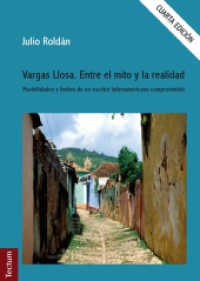Description
(Short description)
This volume scrutinizes Shakespeares theatre as a heterotopic phenomenon continually re-contextualized since its early modern emergence in countless new places and times. Shakespeares drama, with its remarkably persistent tendency towards iterative productivity down the centuries, presents a fascinating complex of localisable but constantly self-generating and self-transforming places of performance whose respective sites and whose import always bespeaks critical liminality. The Australian, Kenyan and German authors present a number of case studies exploring instantiations of Shakespearean heterotopias in the New Globe Theatre, Startrek, Julie Taymores film Titus, Nadeem Aslams novel Maps for Lost Lovers, Julius K. Nyereres translations of Shakespeares The Merchant of Venice and Julius Caesar, and Tom Stoppards Rosencrantz and Guildenstern are Dead. In all of these instances, Shakespeares dramas, both central to canonical European culture but also containing in their textual fabric the potential to give rise to interrogative and subversive performances, embody the generative principle of the heterotopia as a site of the simultaneous confirmation and contestation of hegemonic culture.
(Text)
This volume scrutinizes Shakespeare's theatre as a 'heterotopic' phenomenon continually re-contextualized since its early modern emergence in countless new places and times. Shakespeare's drama, with its remarkably persistent tendency towards iterative productivity down the centuries, presents a fascinating complex of localisable but constantly self-generating and self-transforming places of performance whose respective sites and whose import always bespeaks critical liminality. The Australian, Kenyan and German authors present a number of case studies exploring instantiations of Shakespearean heterotopias in the New Globe Theatre, Startrek, Julie Taymore's film Titus, Nadeem Aslam's novel Maps for Lost Lovers, Julius K. Nyerere's translations of Shakespeare's The Merchant of Venice and Julius Caesar, and Tom Stoppard's Rosencrantz and Guildenstern are Dead. In all of these instances, Shakespeare's dramas, both central to canonical European culture but also containing in their textual fabric the potential to give rise to interrogative and subversive performances, embody the generative principle of the heterotopia as a site of the simultaneous confirmation and contestation of hegemonic culture.








